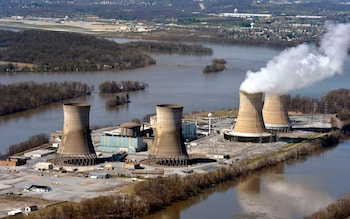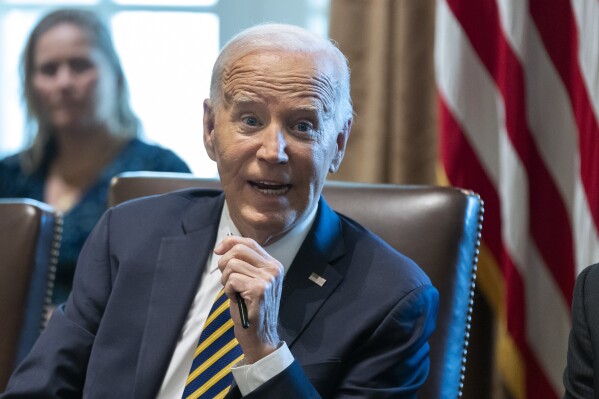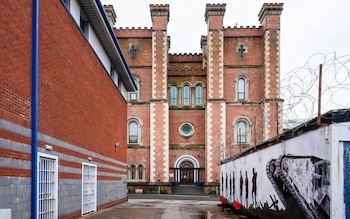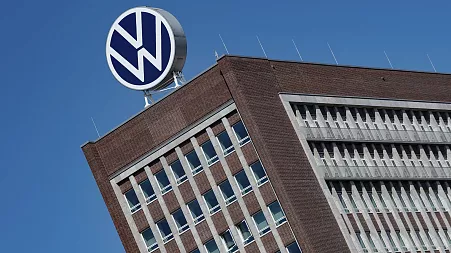A dormant power plant near the site of the worst US nuclear disaster in history is being brought back online to meet the massive electricity needs of AI software.
A reactor in Three Mile Island, Pennsylvania – the site of a separate nuclear disaster – was shut down five years ago after it became uneconomic to run.
But under the deal announced on Friday, it will be switched back on and run at full capacity for at least 20 years.
Constellation Energy, a utility provider, said it aims to restart the reactor in 2028. Microsoft has agreed to consume all the power it generates. With about 837 megawatts (MW) of capacity, the site can generate enough electricity for 800,000 homes.
The reactor sits next to another that was taken out of service 45 years ago after malfunctioning and suffering a partial meltdown, in what is regarded as the worst nuclear accident in US history.
Three Mile Island suffered its infamous nuclear disaster in March 1979 when a combination of “equipment malfunctions, design-related problems and worker errors” led to the partial meltdown of the reactor known as Unit 2, according to the US Nuclear Regulatory Commission.
“This was the most serious accident in US commercial nuclear power plant operating history, although its small radioactive releases had no detectable health effects on plant workers or the public,” the commission says on its website.
“Its aftermath brought about sweeping changes involving emergency response planning, reactor operator training, human factors engineering, radiation protection and many other areas of nuclear power plant operations.”

The accident resulted in no deaths or injuries. Unit 2 is owned by Energy Solutions and is still being decommissioned.
Constellation on Friday said that the reactor it was restarting as “a fully independent facility, and its long-term operation was not impacted by the Unit 2 accident”.
It marks the first time any US reactor has been restarted after decommissioning and the first time a single customer has agreed to buy a plant’s entire output.
The deal underscores the rapidly-growing demand for energy among Microsoft and other technology giants that are racing to develop ever-more-sophisticated AI software
Many are looking at nuclear power to meet this demand thanks to its relatively high and dependable output. The fact it is free of carbon emissions also means companies are happy to describe it as “green” or “clean”.
Microsoft struck the deal at Three Mile Island as part of its efforts to become “carbon negative”, by generating at least as much clean power as it consumes.
Under the agreement, the site will be renamed the Crane Clean Energy Center.
Joseph Dominguez, president and chief executive of Constellation Energy, said: “Powering industries critical to our nation’s global economic and technological competitiveness, including data centres, requires an abundance of energy that is carbon-free and reliable every hour of every day, and nuclear plants are the only energy sources that can consistently deliver on that promise.
“Before it was prematurely shuttered due to poor economics, this plant was among the safest and most reliable nuclear plants on the grid, and we look forward to bringing it back with a new name and a renewed mission to serve as an economic engine for Pennsylvania.”
Top technology industry executives such as Sam Altman, the chief executive of OpenAI, and Bill Gates, the founder of Microsoft, have touted nuclear as a potential power source for the vast data centres needed to develop advanced AI models.
Earlier this year, Amazon struck a separate deal to buy a data centre powered by the Susquehanna nuclear power plant, also in Pennsylvania, although that deal is facing a legal challenge.
On Friday it emerged that Amazon was hiring a “principal nuclear engineer” with expertise in building small modular reactors to help source power for its Amazon Web Services data centre division.
In a job listing, Amazon said the engineer would look to help the tech giant’s partners “design operationally efficient and safe modular nuclear power plants” to deliver “carbon free capacity” for its business. They would also help develop an “internal and external nuclear product and fuel” strategy.
Bobby Hollis, vice president of energy at Microsoft, said: “This agreement is a major milestone in Microsoft’s efforts to help decarbonise the grid in support of our commitment to become carbon negative.
“Microsoft continues to collaborate with energy providers to develop carbon-free energy sources to help meet the grids’ capacity and reliability needs.”
Disclaimer: The copyright of this article belongs to the original author. Reposting this article is solely for the purpose of information dissemination and does not constitute any investment advice. If there is any infringement, please contact us immediately. We will make corrections or deletions as necessary. Thank you.



